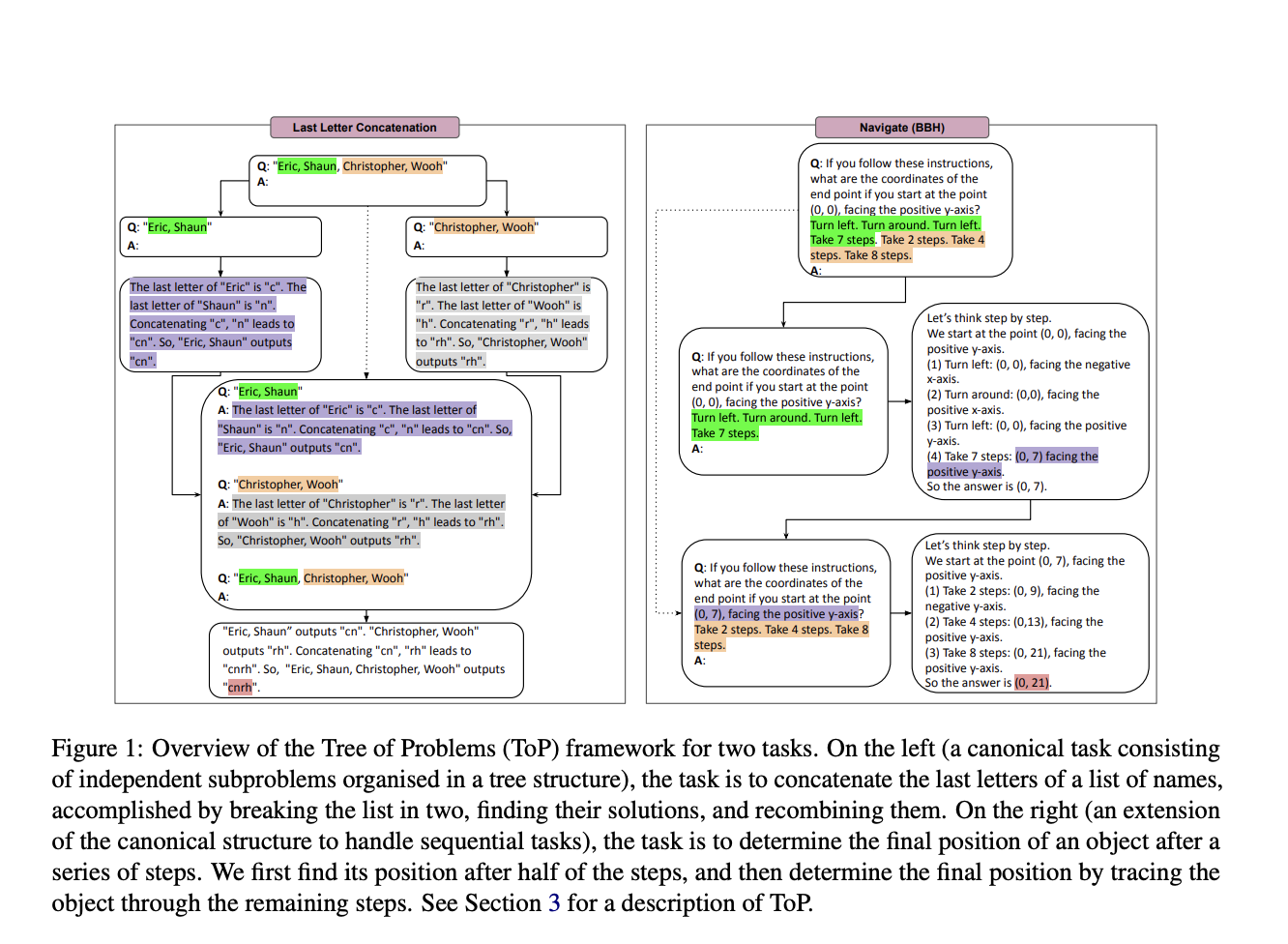
Revolutionizing Language Models with the Tree of Problems Framework
Large language models (LLMs) have transformed how we process language, excelling in text generation, summarization, and translation. However, they often struggle with complex tasks that require multiple steps of reasoning. Researchers are now developing structured frameworks to enhance these models’ reasoning skills beyond traditional methods.
Challenges in Complex Reasoning
LLMs face difficulties when dealing with intricate problems that involve several interconnected steps. Conventional models may overlook essential subtasks, leading to errors or incomplete solutions. This is especially true for tasks that require sequential decision-making. To tackle this, researchers are focusing on breaking down complex tasks into simpler, manageable parts, enabling LLMs to solve them more effectively.
Innovative Solutions
Various methods have been proposed to improve LLM reasoning. Chain-of-Thought (CoT) prompting allows models to reason step-by-step but often requires manual input and struggles with tasks outside its training. In contrast, frameworks like Tree of Thoughts (ToT) and Graph of Thoughts (GoT) organize problem-solving into structured paths. However, these can become overly complicated for some problems.
Introducing the Tree of Problems (ToP)
Researchers from Inria in Paris have developed the Tree of Problems (ToP) framework. This innovative method simplifies problem decomposition by organizing tasks into a clear hierarchy. Each node in the tree represents a smaller subproblem related to the main task. By solving these simpler problems first, LLMs can combine their solutions into a final answer, enhancing accuracy and reducing computational load.
How ToP Works
The ToP framework decomposes a problem into a tree structure of simpler tasks. It begins with a decomposer that breaks down the main task into related subtasks, which are then organized hierarchically. A solver, typically an LLM, addresses these subtasks independently, merging their solutions at the tree’s root. This method allows LLMs to focus on one component at a time, simplifying the reasoning process.
Proven Effectiveness
Empirical studies show that ToP significantly improves performance, achieving a 40% accuracy increase over GoT in sorting tasks and outperforming CoT and ToT in various scenarios. In tasks like set intersection and keyword counting, ToP consistently showed better results, proving its scalability and adaptability across different problem types.
Efficiency Compared to Other Methods
ToP also outperformed the Least-to-Most (L2M) prompting approach, requiring fewer computational calls while maintaining accuracy. In tasks needing sequential processing, ToP effectively handled increased complexity, showcasing its robustness in various scenarios.
The Future of LLM Development
The Tree of Problems framework represents a significant advancement in enhancing LLM reasoning capabilities. By breaking down complex tasks into simpler components and organizing them effectively, ToP improves both accuracy and efficiency. This innovative approach opens new doors for applying LLMs to more challenging reasoning tasks in natural language processing.
Explore the full research paper for detailed insights. Follow us on Twitter, join our Telegram Channel, and connect with us on LinkedIn. If you appreciate our work, consider subscribing to our newsletter and joining our community of over 55k+ ML enthusiasts on Reddit.
Sponsorship Opportunity: Promote your research, product, or webinar to our audience of over 1 million monthly readers and 500k+ community members.
Unlocking AI Potential for Your Business
To stay competitive and leverage AI effectively, consider these steps:
- Identify Automation Opportunities: Find key customer interaction points that can benefit from AI.
- Define KPIs: Ensure your AI initiatives have measurable impacts on your business goals.
- Select the Right AI Solution: Choose tools that meet your needs and offer customization options.
- Implement Gradually: Start with a pilot project, gather data, and expand AI usage wisely.
For AI KPI management advice, reach out to us at hello@itinai.com. Stay updated on AI insights by following us on Telegram and Twitter.
Discover how AI can transform your sales processes and customer engagement at itinai.com.


























